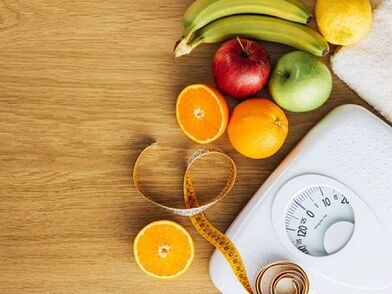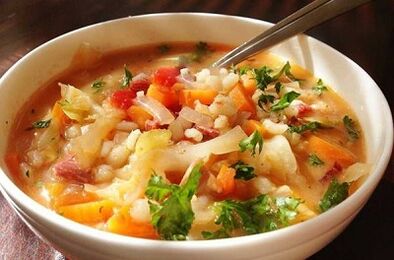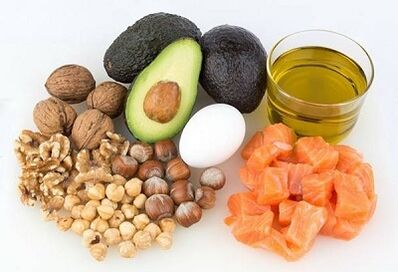
One of the most effective diets for weight loss is a meat-free diet.Many experts, nutritionists and doctors have long confirmed the fact that it is possible to lose weight not only by reducing food portions, but also by eliminating products like meat.After all, it is a huge source of proteins and saturated fats, which are deposited in the body in the form of various lipids, including cholesterol.
So, by giving up meat, you can not only reduce your weight, but also reduce the risk of developing cardiovascular diseases.The risks of developing coronary heart disease, stroke and heart attack directly depend on the level of total cholesterol and “bad” lipoproteins in the blood.And the more we use them, the quicker they are installed on our ships.After all, we are what we eat.
The benefits and harms of meat.Why should you try to give up?
- Meat contains a large amount of protein, which is the building material of our body.But if you give up meat, you can eat other protein-rich foods.These are dairy products (cottage cheese, cheese, milk), legumes, nuts and whole grains.They will saturate the body with enough protein.
- Meat, particularly red meat, is a source of iron, phosphorus, vitamins B12, A, E, D. But we also find a large quantity in plant products, particularly oils.Since meat is not the only source of these vitamins and minerals, its role is exaggerated.
- Meat can be harmful if in the modern world hormones and antibiotics are added to improve taste, quality and appearance.In addition, poorly cooked meat (fried, fatty) is “heavy” for the gastrointestinal tract and causes an exacerbation of chronic pancreatitis and cholecystitis.It promotes the proliferation of putrefactive intestinal microflora.Meat is also harmful to the cardiovascular system.
- Cooked meat is bad energy.This is the opinion of vegetarians and many people who still cannot refuse it.
Having weighed the pros and cons, we can only say that meat is not an essential product, without which a person will develop a deficiency of proteins, vitamins and other elements.It can easily be replaced by other products, even healthier ones.But if you decide to lose weight and completely give up meat, you need to do it gradually so that your body has time to get used to the change in diet.A meat-free diet for weight loss does not mean getting rid of the fats and proteins it contains.But just reduce their number and replace them with the same ones, only with other, lighter dishes.They are found in huge quantities in dairy products, fish, eggs, legumes, nuts and vegetable oils.Gradually, all meat should be replaced with boiled meat, and then its amount in the diet should be reduced.Eat more vegetables – broccoli, celery, carrots, pumpkin, beets, zucchini, avocado.
Main Types of Diets You Can Use to Lose Weight

- Diet number 5 according to Pevzner.This diet is therapeutic and preventive, which doctors prescribe for diseases of the digestive system.It is prescribed as a preventive measure in sanatoriums.Its essence is to eliminate foods rich in cholesterol, essential oils and fats, as well as to reduce salt consumption.Add foods containing pectins and fiber to your diet.Food should be cooked or simmered and it is important to drink enough water.Although this diet allows you to eat a little boiled meat (poultry, beef) and dairy products (milk, kefir up to 200 ml per day), why is diet number 5 not ideal for losing weight?In addition to the fact that it will normalize the functioning of the gastrointestinal tract, rid the body of toxins, it will also help you lose weight up to your normal weight.In addition, it can become a transitional stage for you if you decide to give up meat completely.
- Diet without meat or dairy products.It is more strict, because it completely eliminates animal proteins and fats.Of course, following such a diet, you will definitely lose extra pounds, but creating a plan and diet will not be easy.It will be even more difficult to stick to such a diet.Meat and dairy products should be eliminated gradually.You can leave fish in your diet.
Approximate menu
- Breakfast.Buckwheat, rice, millet porridge seasoned with olive oil with fresh vegetables, bread.Granola with dried fruits, nuts, honey, sesame or flax seeds.Warm tea or compote and an avocado sandwich.
- Dinner.Vegetable soup, mushrooms, peas, beans.Cauliflower, spinach, zucchini, mashed potatoes.Baked mackerel, cod, sea bream with lemon.Vegetable salads, vinaigrette.It is best to season salads with wheat germ oil (a huge source of vitamin E), sesame, olive and walnut oil.You can also prepare pasta made from durum wheat.
- Snack.Eat fruits and berries fresh, chilled or in the form of juice, fruit drink or casserole.Nuts, dried fruits (70-100 g).You can grate an apple, carrots, season with butter or honey.
- Dinner.Baked or stewed vegetables, accompaniment of boiled beans, lentils, chickpeas.Jacketed potatoes, stewed cabbage.Fish can be prepared in the form of schnitzel, tomato casserole and cauliflower.
Diet without meat or fish.This diet involves the consumption of dairy products as protein foods.For breakfast you can eat an omelet with vegetables, cottage cheese with berries, kefir.For lunch or dinner, add milk, a salad topped with yogurt, a boiled egg or a casserole.It is allowed to use low-fat sour cream, cream and butter for sandwiches.
Basic rules of a meat-free diet for weight loss

- Each diet must be accompanied by measured physical exercises.Whether it starts with morning or evening walks in the fresh air.
- Diet - diet.Violating the rules of the diet will not lead you to the desired result, and each sandwich or missed exercise will slowly incapacitate you.It is believed that following the diet for exactly 21 days becomes a habit.
- The diet should be based on three main meals (don't forget to have a snack).
- When cooking, try adding less salt and spices.
- Every morning, drink a glass of lukewarm water adding a teaspoon of honey to it.
- A meat-free diet involves cleansing and unloading the body, rather than starving and exhausting.The diet must be composed correctly so as not to harm the body.According to experts, such a diet should include the consumption of fish and dairy products in minimal quantities (kefir, yogurt, eggs, low-fat cottage cheese).
- Make sure that your diet does not favor foods containing simple carbohydrates (bread, flour products).
- In the first half of the day, eat porridge and bread.For dinner, it is better to prepare a dish rich in protein (legumes, cottage cheese, eggs).
- To improve intestinal motor function and cleanse it of waste and toxins, consume fiber, found in vegetables, fruits, dried fruits and nuts.
Menu of the week
Monday, Wednesday:
- Breakfast: rice porridge, boiled egg, fresh cucumber, hot tea with bread.
- Lunch: vegetable soup, lentils with mushrooms, baked beetroot salad with olive oil.Dessert: cottage cheese with honey and dried cranberries, compote.
- Dinner: mashed potatoes and spinach, fish croquette, avocado.
- Snack: nuts, raspberries, blueberries, strawberries.
Tuesday, Thursday:
- Breakfast: kefir, wholemeal bread (100 grams)
- Lunch: fish soup, vinaigrette.Dessert: berry jelly.
- Dinner: pumpkin soup with mushrooms, baked fish with lemon, fresh vegetable salad.
- Snack: apples, pears, peaches.
Friday, Sunday:
- Breakfast: oatmeal with nuts and honey, compote.
- Lunch: bean and herb soup, zucchini pancakes, hard-boiled egg, olives.Dessert: cottage cheese casserole with raisins and apple.
- Dinner: stewed fish (mackerel), pea and cauliflower puree, vegetable salad.
- Snack: figs, dates, dried apricots.
SATURDAY:
- Breakfast: omelette with onion, tomato and cheese, fresh cucumber
- Lunch: buckwheat with vegetables, cabbage salad, corn and eggs, seasoned with unsweetened yogurt.Fresh berry juice.
- Dinner: boiled beans, stewed cabbage with mushrooms, salad of pepper, onion, tomato.
- Snack: orange, pineapple, pomelo, persimmon






























